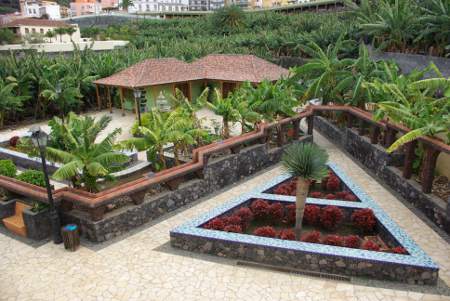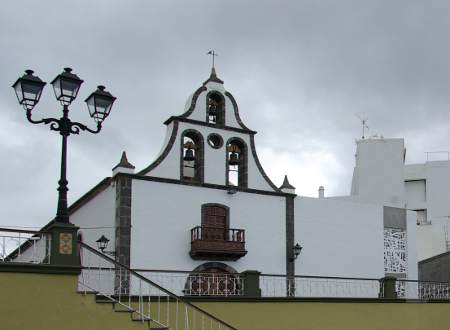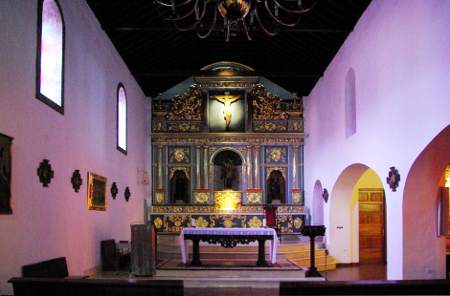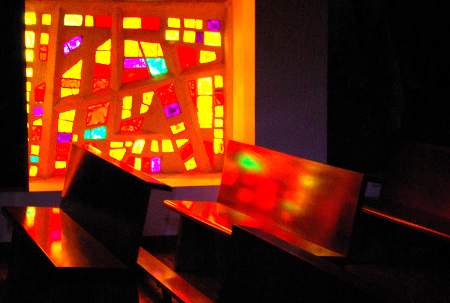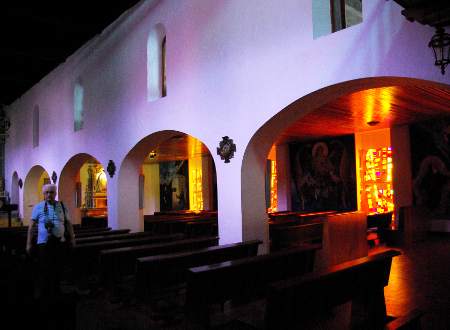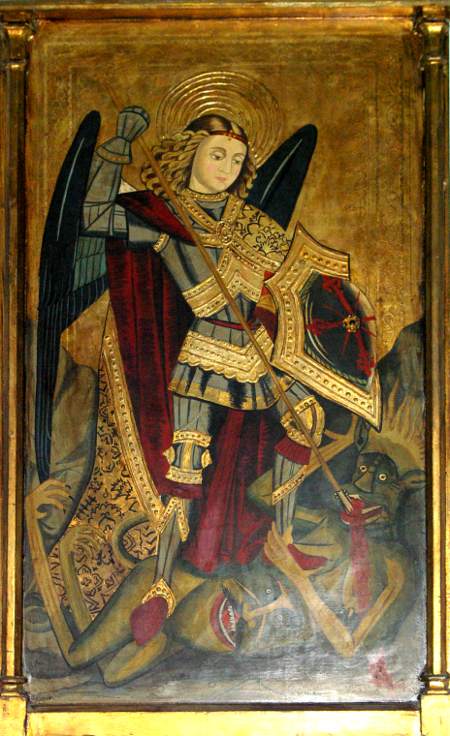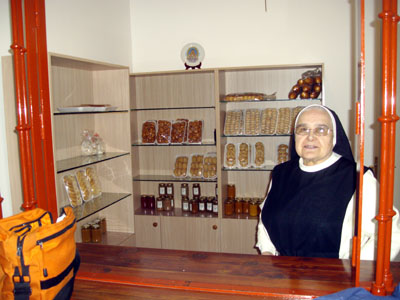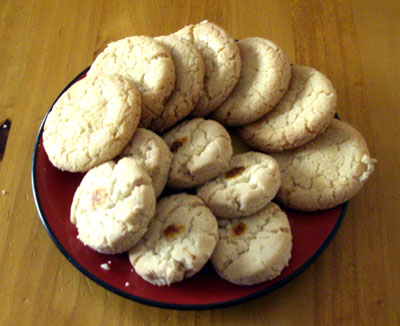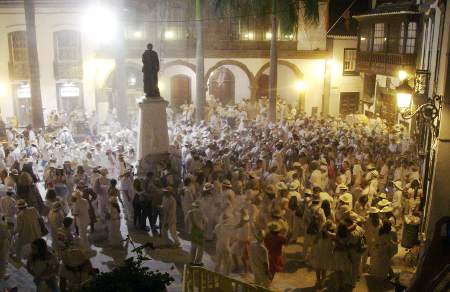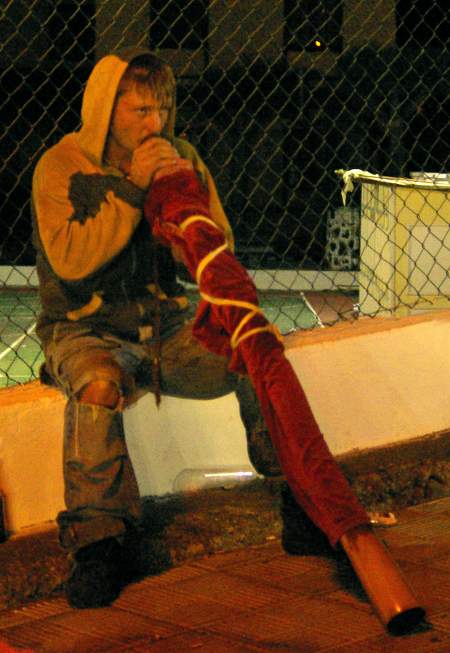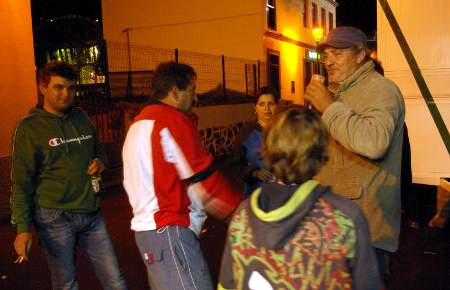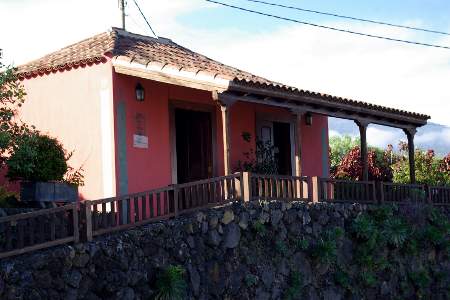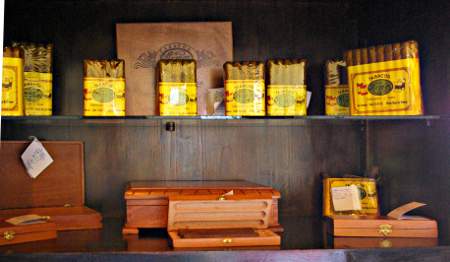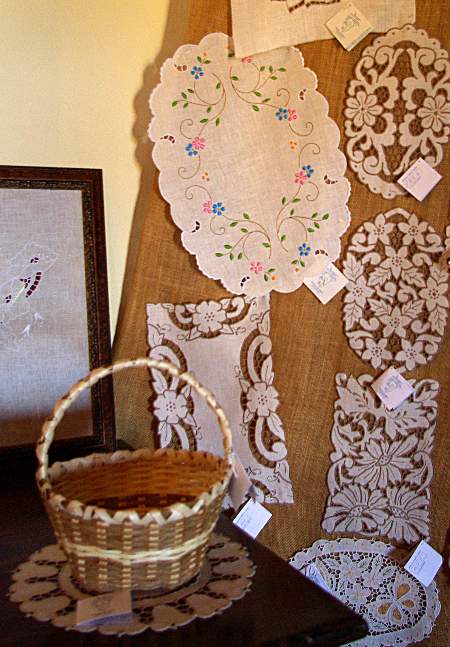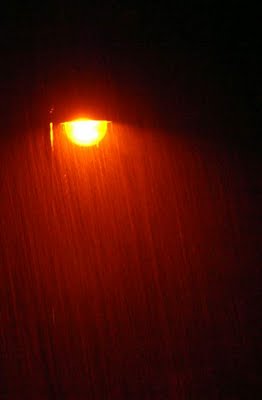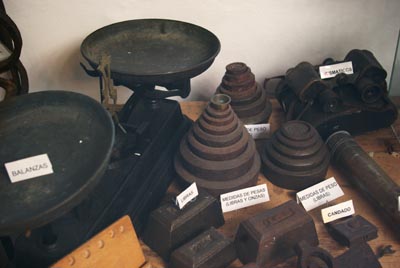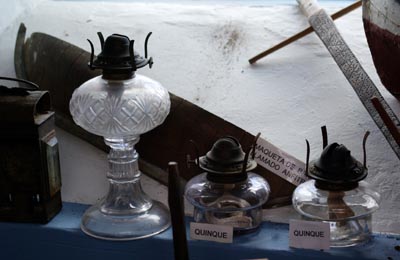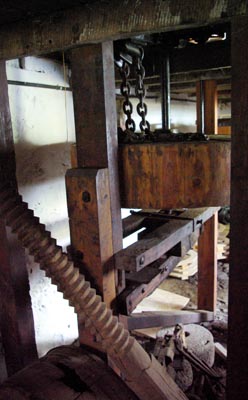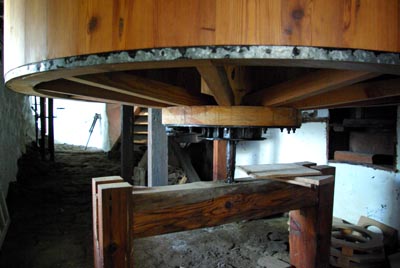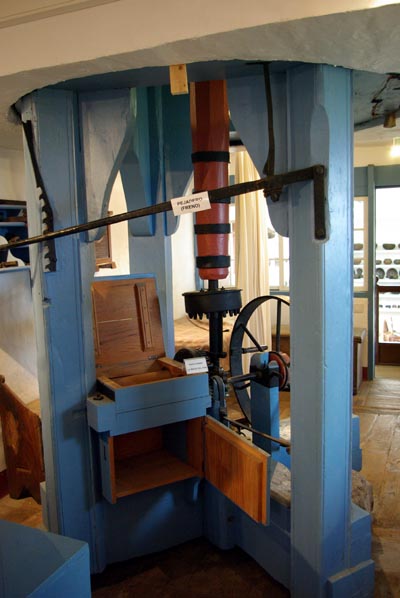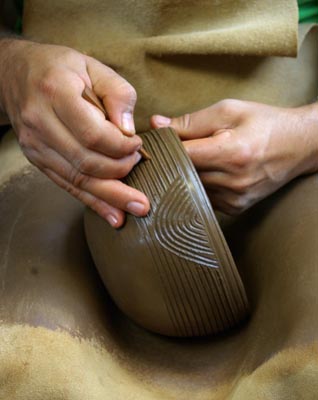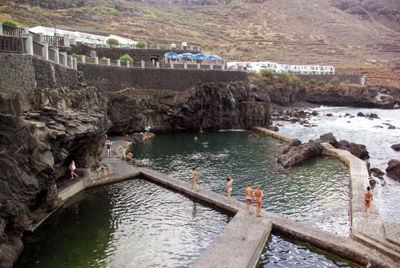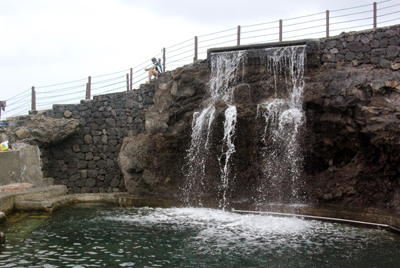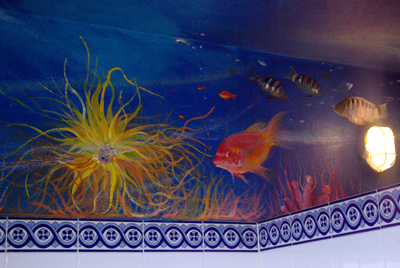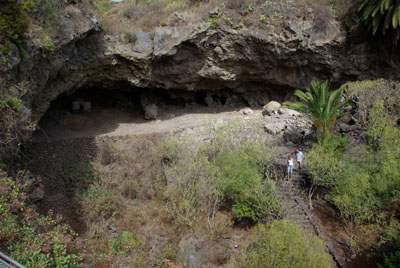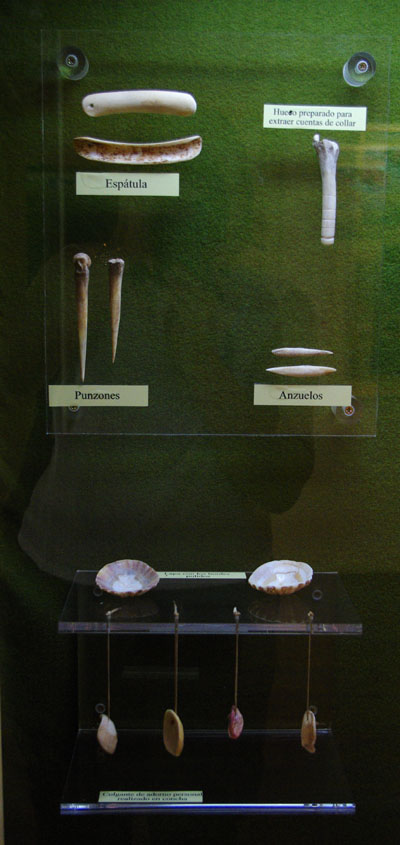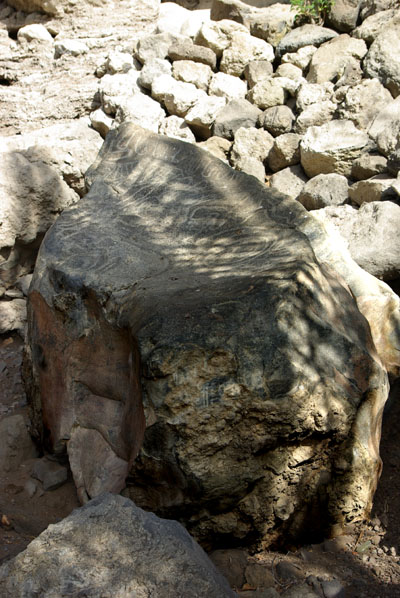I had an email asking me to recommend the top ten things to see and do.
It was actually quite difficult to decide, because tastes differ so much. So this is a purely personal top ten. Your mileage may vary.
10. The ObservatorySee
The Observatory and
Visiting The Observatory. While you're there, be sure to go up to the highest point of the island, the Roque de los Muchachos, and admire the view.
9. San Antonio and Tenguia VolcanoesTeneguia last erupted in 1971, and it still looks a lot like the surface of Mars. See
Which Planet Are You On? San Antonio is a much older volcano, with a visitor centre, and a nice strioll with spectacular views. You can even ride a camel.
See
Taking the Hump8. El TabladoWell, I say El Tablado, but really the whole of the north of the island is stunning. You know those fantasy paintings, where the landscape is too steep and green to be real? That's what it looks like, sprinkled with picturesque villages clinging to the . El Tablado is just the most picturesque of these villages.
7. The Night SkyThere's a really simple reason why the observatory's here. I grew up in Leeds, and I was lucky to see ten stars in the sky. Light pollution's got a lot worse since then. After the big earthquake in Los Angeles, apparently some people phoned the police to ask what on earth that white streak was running right across the sky, man? You see, they'd never seen the milky way in their lives. I find that sad. So while you're on La Palma, pick a cloudless night, get a couple of hundred yards away from street lights, and wait at least ten minutes for your eyes to adjust. If you've always lived in cities, it may be some time before you remember to shut your mouth.
See
http://lapalmaisland.sheilacrosby.com/2008/05/starlit-skies.html6. Los Tilos Cloud ForestAt the top of the ravine just south of Los Sauces inside the clouds is an ancient forest of laurels and heather trees.Since La Palma is an island, many of the plants here have evolved in isolation, making them unique.I saw an overweight, arthritic botanist bouncing like a child on Christmas morning, almost incoherent with delight.“Oh my! Woodwardia. I hoped I’d see that but I didn’t dare hope too - Canaria canariensis! Oh look at this and -” He said that when he dies, he doesn’t want to go to heaven, he wants to come to La Palma.
5. Cueva BonitaCueva Bonita means Beautiful Cave, and it certainly is beautiful, especially at sunset. The catch is that the cave is only accessible by sea. You take a boat trip from Puerto Tazacorte. If you're lucky, you might see dolphins or even whales too.
4. Las Nieves ChurchLa Palma has lots of old, pretty churches. Quite often, they hold beautiful statues, a reminder of the days when the island got stinking rich from the trans-Atlantic trade. The loveliest is the
little church at Las Nieves, which holds a little, 14th century terracotta statue of the Virgin Mary on a silver throne.
3. A local fiestaEach little village has an annual fiesta, usually when the patron saint of the local church has his or her saint's day. This means that it's a rare week that doesn't have a fiesta somewhere on the island. Ask the local tourist office for details. A typical fiesta takes place the night before the local holiday (so you can sleep it off). It includes a religious procession carrying the statue of the saint around the village (some of the statues are very old and beautiful), a live band playing salsa music, and mobile bars selling drinks and food. Many have something special of their own, like dancing horses made of papier-mâché, decorated archways, or the recreation of a battle. I recommend rum and coke (called
cuba libre) and a fried pork sandwich. Do NOT drink and drive. The police know when the local fiestas take place, and tend to be hiding with their breathalysers just down the road. Even more to the point, the roads are twisty with lots of spectacular drops if you take a bend too fast.
The tourist office will have details of what's happening.
2. El Time ViewpointSee
http://lapalmaisland.sheilacrosby.com/2008/06/el-time-viewpoint.html1. The CalderaThe Caldera is a humongous crater, 5 miles (8 km) across, with rim walls almost 6,000 ft (1,800 m) above the floor. If you're really fit, I recommend the 27 km (17 mile) hike from Los Bresitos round to the camp-site and down the Angustias Ravine. It's exhausting, and I'm no longer fit enough myself, but the scenery is fantastic. Alternatively, you can stay a night or two at the camp-site in the centre. If you want to look down at the Caldera instead of up at the walls, a long-distance footpath runs around the rim, and if you're less fit, it's possible to walk short (or very short) sections to suit your abilities. Failing that, you can drive to a viewpoint on the rim and look down. The best ones are La Cumbrecita, La Cancelita, Los Andennes, and the Roque. See:
The Caldera ,
Los Andennes Viewpoint and
The Caldera CampsiteLabels: Canaries, Canary Isands, La Palma, La Plama
Bookmark with:
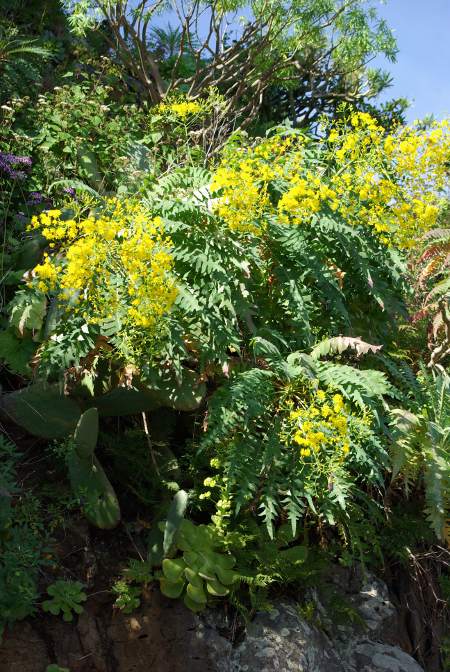
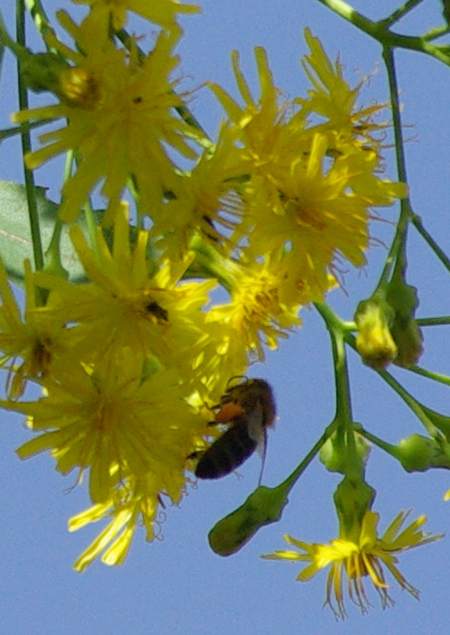
 Del.icio.us
Del.icio.us
 Digg
Digg
 Reddit
Reddit
 Facebook
Facebook
 Furl It
Furl It
 Newsvine
Newsvine




